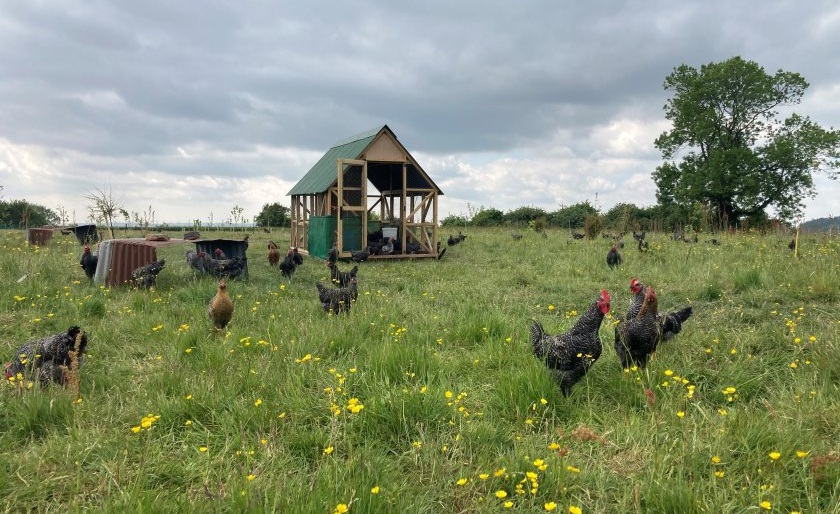
A group of farmers are trialling heritage poultry breeds in a move to cut carbon emissions, eliminate the routine culling of male chicks, and help producers survive soaring costs.
The project, part of an Innovative Farmers field lab, brings together six farmers and a researcher to explore the potential of ‘dual-purpose’ chickens—traditional breeds suited for both egg and meat production.
These birds could offer a sustainable alternative to modern specialist breeds, which are highly efficient but come with significant environmental and ethical costs.
“For decades, poultry farming has bred birds for either egg or meat production, not both,” said Mike Mallett, an organic egg producer and mixed arable farmer from Suffolk who is leading the trials.
“After the Ukraine war began and organic feed prices soared, we started looking for a way to step off the treadmill.
"Instead of relying on high-protein imported feed, we wanted to explore whether lower-stress birds could thrive on homegrown protein sources.”
Modern poultry systems rely heavily on high-protein imported feeds, especially soy, contributing to a sizeable carbon footprint.
Meanwhile, male chicks born to egg-laying breeds are routinely culled at birth—a controversial practice already restricted in some European nations and potentially the UK within the next decade.
Supporting the trial, Dr Annie Rayner, from Planton Farm in Shropshire, said: “Dual-purpose breeds may require less protein, which could mean greater reliance on homegrown feed rather than imported soy.
“We need to address waste across the food system. By making use of male chicks and reducing imports, this approach could have real benefits.”
The past few years have proved exceptionally difficult for small-scale poultry farmers, who have faced soaring feed prices and the continued threat of avian flu. Many have been forced to abandon production entirely.
“A huge number of small producers have left the sector,” noted Mr Mallett. “If this model works, it could offer an alternative and help stem the decline.”
According to Dr Rayner, these traditional breeds may also help farmers adapt to climate change, as their hardier nature could make them more resilient to fluctuating weather and disease pressures.
Because dual-purpose birds are not bred solely for rapid growth or intensive egg production, they may face fewer welfare challenges than modern hybrids.
“The theory is they’re much more resilient,” said Mr Mallett. “That doesn’t mean they’re immune to issues like avian flu, but they should be less prone to some common health problems.”
Dr Rayner added: “Selecting for productivity in both eggs and meat, rather than extreme specialisation, could make a real difference. These birds aren’t pushed to unnatural limits, which means fewer welfare issues overall.”
While dual-purpose breeds are widely used in parts of Africa and Asia, and increasingly reappearing in Europe due to changing regulations, they remain rare in UK farming systems.
The trial aims to test their suitability to British conditions and understand how consumers might respond to meat from these breeds.
“I’m interested to learn what the end product tastes like and how we can market that product,” said Mr Mallett.
“Running this as a field lab means we can see how it works across different farms, rather than just in theory."
The project is being run as a field lab through Innovative Farmers, a programme that supports farmer-led research in real-world conditions.
